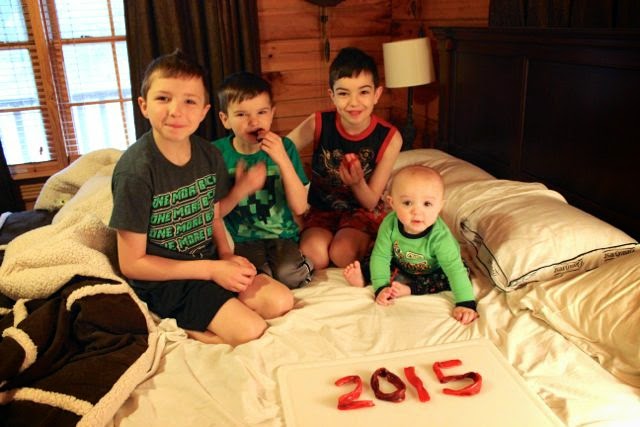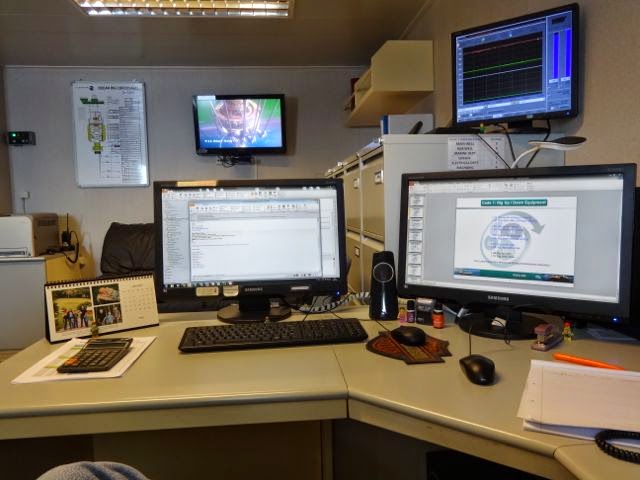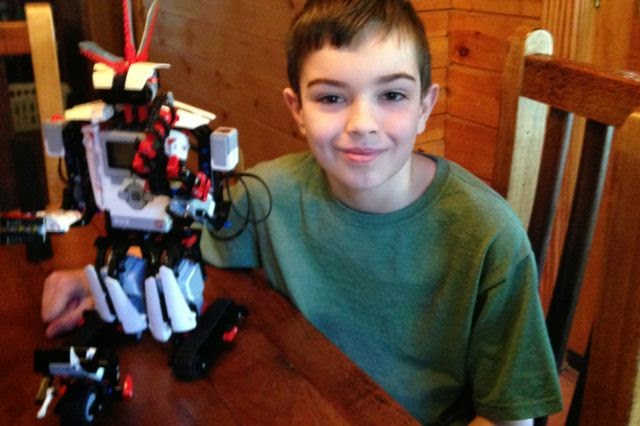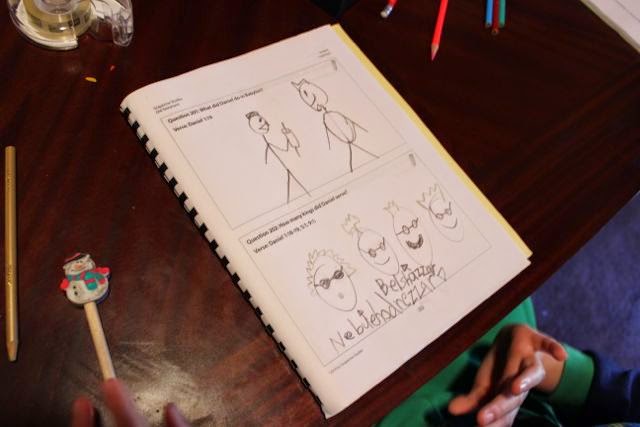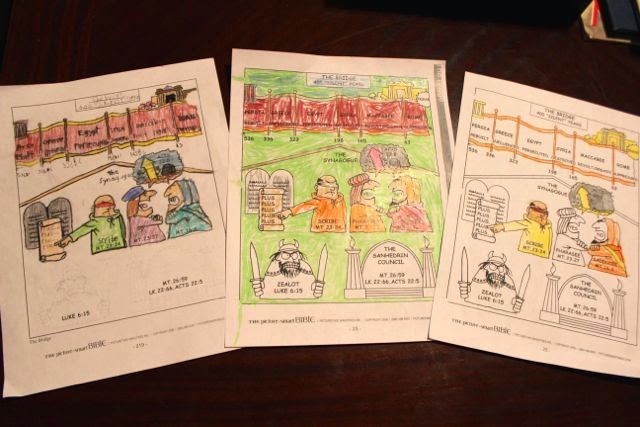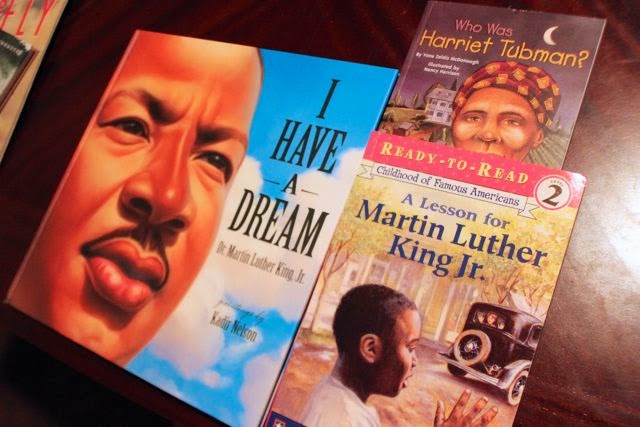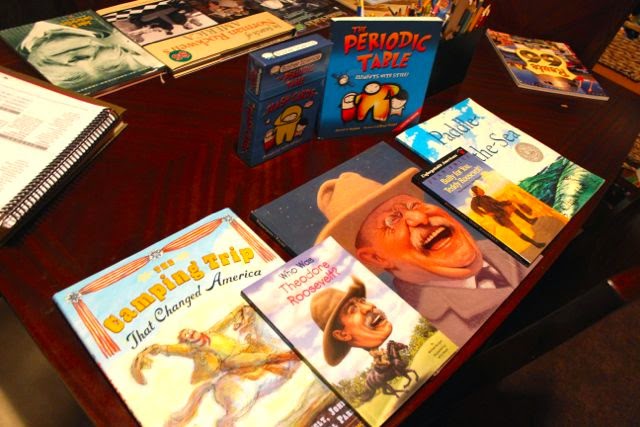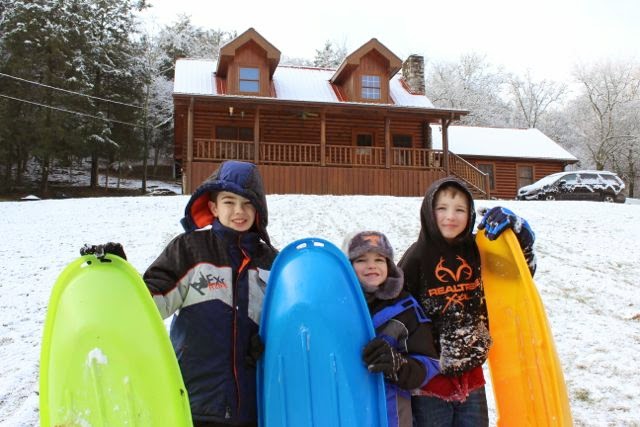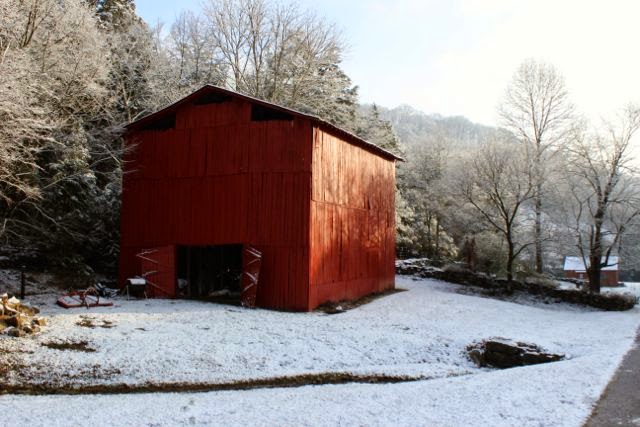It’s been a slow a-cranking-back-up this month, but January is always kind of like that for us. Even with our slowly cranking-up school days, life still seems to race by. I blink and the weekend is once again upon us. How can time pass so fast?!? Is it really 2015? [And are those really Fruit Roll-ups in my bed?]
This is one of the many reasons I love homeschooling. I can’t imagine how quickly these boys would be growing up if they were gone all day every day. It already seems like they are growing right before my eyes. I keep thinking, “How can I only have six more summers before Stephen graduates?!?” My heart splits as I think about the missed opportunities. My heart swells when I ponder those opportunities when, by God’s grace, I think I might have hit the bulls-eye. There’s one thing I’ve learned I’m learning:
How I spend my time matters.
So when I spend several days setting aside my blogging-and-family-memory-recording hobby (which I love and am pretty passionate about) because we now have a seven-month-old who obviously does not share my enthusiasm for computer-related activities, it’s okay in the grand scheme of things. These are difficult lessons for a check-the-box obsessor. [Seriously, I even make deadlines for myself when none really exist. Anyone out there identify with such insanity?]
So now that I’ve fallen “behind” (and will likely continue to do so for a while), let’s see if I can catch us all up on what we’ve been up to…
We started 2015 with my husband – along with the LEGO Ferrells – on a drillship off the coast of Brazil.
Gary nicknamed the LEGO Ferrells the LFF (Lego Ferrell Family). With our family’s fascination with hidden object games, he surprised us with an occasional Find-the-LFF puzzle sent straight to my email inbox.
This is Gary’s desk offshore, where he’s hidden six Lego mini-figs. Can you find all six Lego Ferrells in the above photo?
While Gary was offshore, the rest of us back home enjoyed playing games (our solution to fighting winter doldrums – click here for some of our favorite games) and going on walks together (another solution to fighting winter doldrums)…
As with any typical family walk, we have Stephen reading (on the right) and David & Levi leading way up front as they compete to be in “first place.”
Earlier this month, Stephen built his robot EV3RSTORM,
and Isaac officially joined our school room. (He was already in the school room, but I was carrying him almost constantly. Now I can set him down in the playpen for about ten minutes at a time.)
To tell the truth, on a day when I was just DONE with our school day (even though we were not actually done with our school day), I called off the remainder of our day and rearranged furniture instead. It gave me a feeling of accomplishment, anyway.
[Yes, we might have a had a few days this month when we were still working on our core work until after dusk. I don’t know what it is about January and February. We seem to work in s-l-o-w motion.]
Now for a little how-our-family-does-things trivia:
Q: What do we do when we find out we have family presentation the night before our Classical Conversations community meeting day?
A: We present on what we’re already doing.
We are currently planning our next big 50-states-before-they-graduate trip. In late March we’ll be flying to Los Angeles and driving through CA, NV, AZ, UT, CO, NM, TX, and OK, where we’ll stop to visit my family before heading back through AR to TN. For our presentation, we plotted our past trips on this map, along with a rough outline for our future planned trips. We have six and a half more years to take seven more trips (including Hawaii and Alaska, which will probably have to be the summer(s) after Stephen graduates). It’s a good thing we never specified which children are “they.”
Q: What do we use for language arts for Grades K-3?
A: Mostly, we just use All About Reading and All About Spelling, along with Script-n-Scribe Roller Coaster Writer and Letter Connector.
The boys love the stories in All About Reading. Even Stephen joins David when he reads his AAR stories. The stories are amusing and engaging for all of them, and the curriculum itself teaches things like idioms. In the above photo, Stephen even brings his math assignment with him (as if he would complete his math assignment while David is reading an amusing story, but he gets points for trying).
All About Spelling has not only given me a systematic way to teach the boys spelling, it has taught me many rules that I did not know about spelling and syllabication. As an intuitive speller, I’ve always just “gotten” it without much effort. My children, however, are not intuitive spellers. This program has helped me to teach them in a way that they understand. Not only that, it also includes sentences for dictation, which we have used to learn punctuation, capitalization, parts of speech, and sentence structure. In fact, until this year for David (our almost-9-year-old), we have done nothing else for language arts. If you’re interested in learning more about All About Spelling, you can read this post.
When Stephen joined Essentials almost four years ago as a third grader, he struggled quite a bit with the IEW writing assignments. Because of that struggle, I decided to introduce David to the program using IEW Bible Heroes, and it’s been really great! For those worried about English grammar before Essentials, be sure to memorize the three cycles of English grammar, and you may also want to check out Fix-It Grammar.
Q: What do we do with Isaac during Essentials?
A: When Gary is home, Isaac hangs out with his daddy. When Gary’s not home, Isaac sits in class with Stephen and me doing things like… learning the difference between active and passive voice.
Q: How do we get our boys excited about math?
A: For David, silliness is key. He sometimes draws his numbers hanging off the “cliffs” (aka, the lines where the answers go), or speaking to each other with voice bubbles, or engaging any number of other melodramatic events that numbers can do on a boy’s Saxon math page.
In this case, he improved his math lesson by adding his own title to the graph. The main thing for us is to just… laugh with math.
In fact, we have a library of Life of Fred books. My children love them. These books are silly-funny, they place the learning of mathematics in context, and they are especially helpful for our avid readers who get easily distracted by specks of dust while completing a math assignment.
When Life of Fred: Financial Choices arrived, Stephen sat on the bed reading and answering some of the “high school” practice exercises for an hour or two one night after our school day was over. I love that the boys do this in their spare time. I’m honestly thinking about taking the plunge and purchasing the entire set of Life of Fred books all the way through Calculus just to encourage additional mathematics study in our home. To find out more, read the topics covered in each book, and download samples, visit the LifeofFredMath website. [Note: Life of Fred is not our core math curriculum. We use Saxon math for our core math because I am interested in developing the discipline of mathematics in my children. This is my own personal preference based upon my experience as an engineer and as a former high school math teacher seeing the weaknesses in the students I taught. And… after several years of elementary-math-curriculum experimenting, we came full circle back to Saxon because it works for us, even if the boys sometimes get distracted by the dust floating in the air. What matters more than their distractibility is my response to their distractibility. Honestly, my response is what causes the tears in any subject in our homeschool.]
Q: Do we use a Bible curriculum?
A: Yes. We currently use a combination of Grapevine Studies and PictureSmart Bible. We just finished up Grapevine Studies Old Testament Catechism (about two months later than I had planned, but, once again, we must look at the grand scheme of things, which is… well, we finished it!).
We’ve enjoyed many Bible studies by Grapevine Studies, but I’ve found that we enjoy our studies more if we switch things up a bit, so we’ve returned to using PictureSmart Bible for our study of the New Testament this semester at the request of our eleven-year-old, Stephen. We are currently finishing up “The Bridge” in the PictureSmart Bible, which provides an overview of history during the intertestamental period.
It’s been a great springboard for discussion as it places events from our timeline (and geographical places we’ve memorized) in a Biblical context and vice versa.
Q: How do we “build” upon our memory work?
A: We sometimes do activities, but mostly… we just read.
In fact, that’s all we’ve had time and energy to do since we started back after Christmas. So… here’s what we’ve been reading:
When studying the 14th Amendment which led to the Civil Rights Movement, we read from William Bennett’s Treasury of Virtues (which we continue to use every week) along with the wonderful picture book I Have a Dream (Book & CD with MLK Jr’s speech as it was given during the March on Washington) and the reader A Lesson for Martin Luther King Jr. Even though we were planning to read it this week, we had already read Who Was Harriet Tubman? last semester. We were very pleased with these selections!
For the Industrial Age, we read Smokestacks and Spinning Jennys, Giants of American Industry – John D. Rockefeller, and In Search of Norman Rockwell’s America. The Rockefeller book has some issues (as indicated on the review I wrote on amazon), but I thought it was still a great overview of Rockefeller’s life if you skip the parts I indicated on this reading plans post. I especially enjoyed the Norman Rockwell book because it had so many large Rockwell illustrations for picture study, and it included quotes by Rockwell and about Rockwell. The page below includes a quote from Buzz Aldrin (a person who will be coming up in a future week of memory work).
During Week 15 (Theodore Roosevelt, Great Lakes, and Elements of the Periodic Table), we enjoyed reading Paddle-to-the-Sea, which gave us a chance to review the Great Lakes in detail (love-love-love the illustrations in this book!). Stephen has also enjoyed The Periodic Table: Elements with Style! and keeps telling us random things about elements, although I’ve discovered it’s not a complete reference in its listing of elements. For a guide that includes all the elements, you might look at The Elements: A Visual Exploration of Every Known Atom in the Universe, which is one that we’re considering as an alternative, although my husband will have some real issues with its stance against the incandescent bulb. (If you only knew how serious this debate is to my dear husband…)
The last time we were in Cycle 3, we very much enjoyed reading Bully for You, Teddy Roosevelt! and are considering re-reading it if we find them time. We are still working through the other books (because we are not yet officially finished with Week 15): To Dare Mighty Things: The Life of Theodore Roosevelt, The Camping Trip that Changed America, and Who Was Theodore Roosevelt?.
As far as other things are concerned, Stephen has been presenting on Great Artists during our Fine Arts time. He needed a structured presentation topic each week, and the tutors now have someone to research the artist for them; it’s a win-win! I’m hoping to find the time to go back to our Famous American Artists post to include a summary of each of his presentations. Each week, we’ve found a Biblical truth that ties in to each artist’s life or artwork. Making those connections is a beautiful, beautiful thing.
Speaking of beautiful…
we finally had enough snow here for some sledding…
…which made for three thoroughly delighted boys!
Here’s hoping you are enjoying your homeschool daze during these sometimes-tough-and-rough-but-very-blessed winter months!
Do you have any questions about our homeschool or about curriculum we use? If so, please leave a comment or shoot me an email! I’d love to hear from you!

